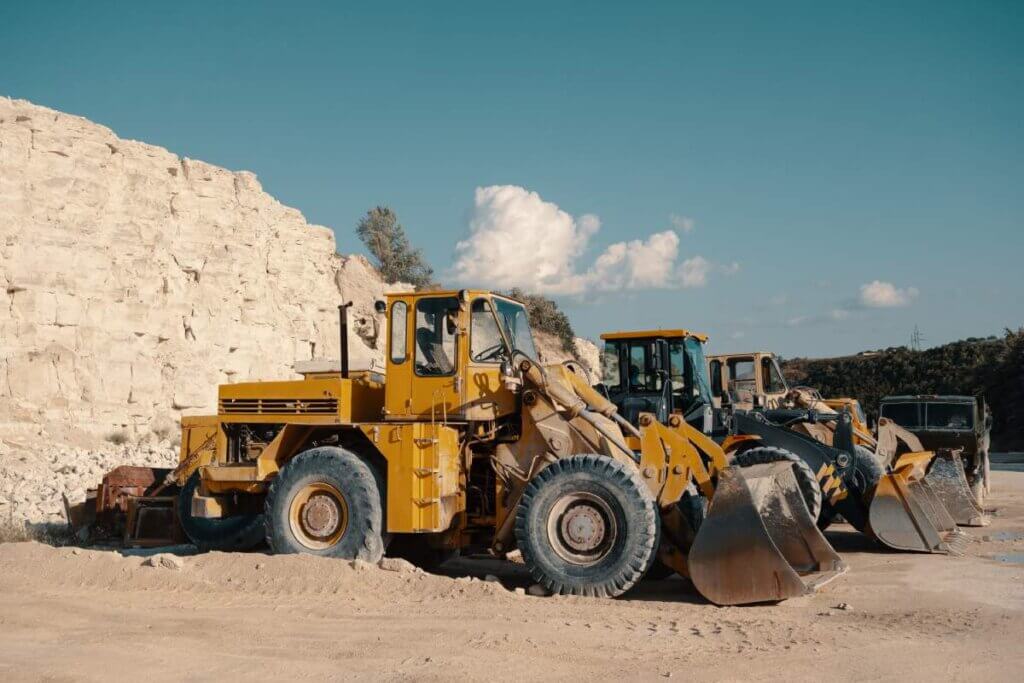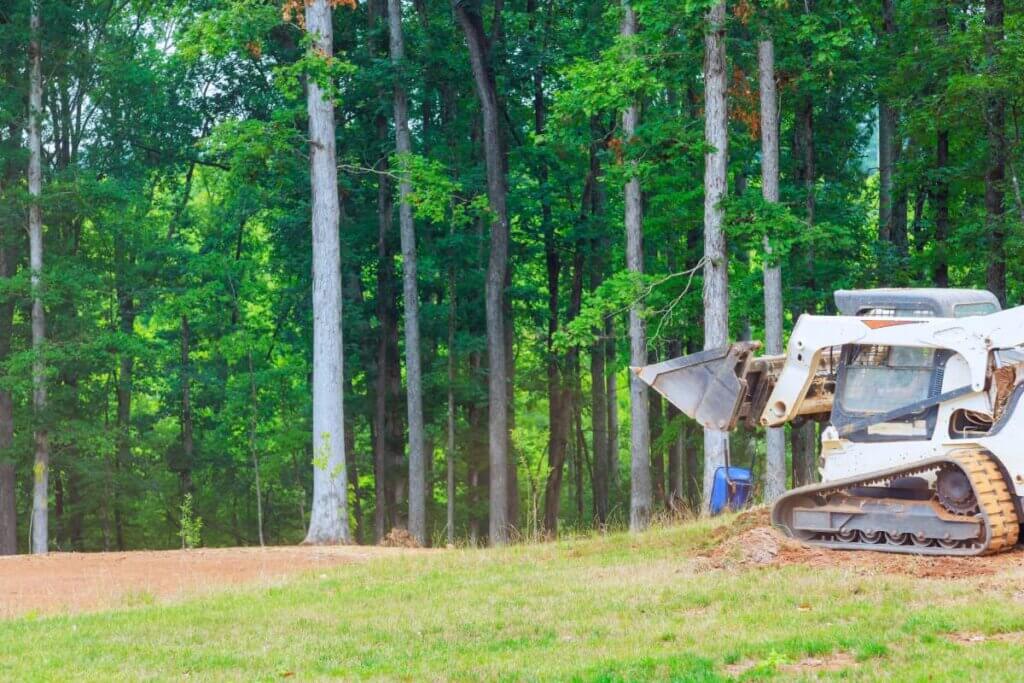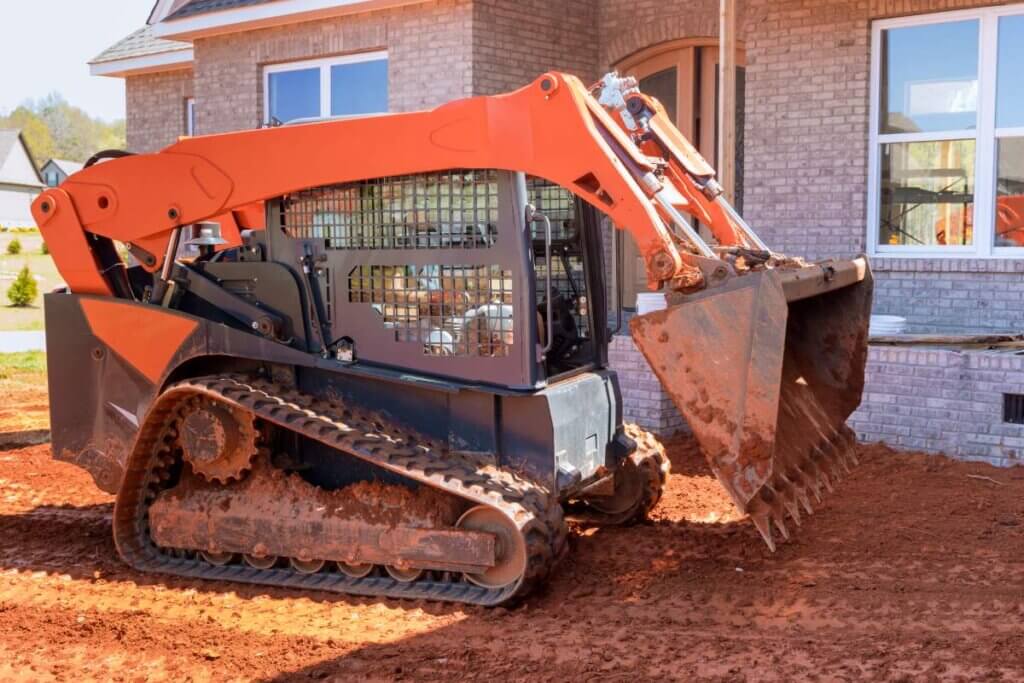When it comes to versatile and powerful equipment for construction, landscaping, and agriculture, skid steers and normal loaders are often compared. Skid steers, also known as skid loaders, are renowned for their compact size, manoeuvrability, and adaptability. While both machines can handle similar tasks, each has its advantages.
Understanding these differences and how to maximise the performance of your skid steer can help you make the best decision for your specific project.
You might also read:
Skid Steers vs Normal Loaders: A Comparison
1. Size and Manoeuvrability
One of the biggest advantages skid steers have over normal loaders is their compact size. A normal loader, such as a wheel loader, is typically larger and more suited for big, open areas. In contrast, a skid steer is designed to perform in confined spaces, making it ideal for urban environments, small construction sites, or areas where precision is key.
Skid steers can turn within their own footprint, allowing for tight turning radii. This is possible because of their unique steering system, where one side of the wheels or tracks can operate independently of the other. Normal loaders, while also capable of steering, lack this degree of precision and often require more space to manoeuvre.
For construction jobs that involve narrow spaces, like alleyways, or for intricate landscaping projects where space is limited, skid steers are the go-to option. In Australia, where urban construction and landscaping projects are booming, skid steers are often the machine of choice for contractors who need efficiency in tight spaces.

2. Versatility and Attachments
Skid steers offer unmatched versatility, largely due to the wide range of attachments they can accommodate. From buckets and augers to grapples, trenchers, and pallet forks, skid steers can be transformed into multi-functional machines capable of handling various tasks like digging, grading, trenching, and even lifting.
Normal loaders can use attachments too, but skid steers are built with a quick-attach system, enabling operators to change attachments rapidly. This versatility is particularly useful for contractors who need to switch between different tasks throughout the day without switching machines. For instance, on a construction site, you might use the skid steer to dig trenches in the morning and switch to a pallet fork attachment in the afternoon to move materials around.
3. Power and Lift Capacity
While skid steers are smaller, they pack a punch in terms of power. Modern skid steers are equipped with engines capable of producing impressive horsepower, making them suitable for heavy-duty tasks. Their hydraulic systems are powerful, allowing them to lift heavy loads with ease. While normal loaders tend to have higher lift capacities, skid steers excel in offering power in a smaller, more manoeuvrable package.
The unique lifting design of skid steers also gives operators an edge. Some skid steers are designed with vertical lift arms, enabling the machine to lift loads straight up, which is useful for tasks requiring precision or when loading materials into higher places. Others feature radial lift arms, which excel in digging and grading work.
For Australian contractors working in agriculture, construction, or landscaping, this power-to-size ratio makes skid steers an excellent investment. They provide the strength needed for demanding jobs without the footprint of a larger loader.

4. Cost-Effectiveness
Another factor to consider is the cost of the machines. Skid steers are generally more affordable than normal loaders, both in terms of upfront costs and ongoing maintenance. The smaller size means less fuel consumption, lower transportation costs, and reduced wear and tear on the machine itself.
For smaller businesses, landscapers, and agricultural operations looking to maximise their return on investment, skid steers represent a cost-effective option. Their versatility means they can perform various tasks with the right attachments, reducing the need to purchase or rent multiple machines.
5. Ease of Transportation
Skid steers, because of their compact size and lower weight, are easier to transport compared to normal loaders. They can be hauled on a standard trailer, making them ideal for contractors who need to move machinery between job sites frequently. In contrast, larger loaders may require special transportation permits and larger vehicles for moving, which can add to logistics costs and complicate project timelines.
How to Enhance Skid Steer Performance
While skid steers are already highly capable machines, there are several ways to boost their performance and efficiency, especially if you want to get the most out of your investment.
1. Upgrade to High-Flow Hydraulics
One of the most effective ways to enhance your skid steer’s performance is by upgrading to a high-flow hydraulic system. Standard-flow skid steers operate at lower hydraulic pressures, which is suitable for basic attachments like buckets and pallet forks. However, high-flow hydraulics increase the flow of hydraulic fluid, allowing the skid steer to power more demanding attachments, such as mulchers, snowblowers, and stump grinders.
This upgrade can significantly expand the functionality of your skid steer, making it more capable of tackling tougher tasks that would otherwise require a larger machine. For businesses in Australia’s agricultural or forestry sectors, high-flow hydraulics can improve productivity when dealing with heavy-duty tasks.

2. Use the Right Tires or Tracks
Choosing the right tyres or tracks can drastically improve your skid steer’s performance. For operations on soft or muddy terrain, upgrading to tracks instead of tyres can enhance traction and reduce ground pressure, preventing the machine from sinking or getting stuck. Conversely, if you’re working on hard, dry surfaces, skid steers equipped with solid rubber tyres can offer better stability and durability.
For Australian farmers and contractors, switching between tracks and tyres depending on the terrain can increase efficiency and prolong the lifespan of the machine.
3. Invest in Maintenance and Preventive Care
Like any piece of equipment, your skid steer will only perform at its best if properly maintained. Regular oil changes, hydraulic system checks, and filter replacements can keep your skid steer running smoothly and prevent costly breakdowns. Keeping an eye on wear and tear, especially on key components like tyres, tracks, and hydraulic lines, will help maintain peak performance.
Establishing a routine maintenance schedule is essential, especially if your skid steer is frequently exposed to harsh conditions, such as dust, dirt, or extreme weather. In Australia, where projects can often be in challenging outdoor environments, regular maintenance ensures long-term reliability.
4. Add Performance-Enhancing Attachments
Upgrading your skid steer’s attachments is a great way to boost performance. Some advanced attachments come with features designed to increase efficiency, such as automatic levelling systems or built-in sensors. For example, an automatic laser grading attachment can ensure more precise results when working on landscaping or road construction projects.
Investing in technologically advanced attachments can not only save time but also reduce operator fatigue by automating some tasks.
5. Operator Training
Finally, one often overlooked aspect of skid steer performance is the skill level of the operator. A well-trained operator can get the most out of the machine, ensuring it is used efficiently and effectively. Investing in operator training ensures that your team can operate the machine safely and maximise its performance in different scenarios.
Conclusion
Skid steers have several advantages over regular loaders, especially in terms of size, versatility, and manoeuvrability. Their compact design makes them ideal for urban and confined workspaces, while their versatility allows for a range of applications with the right attachments.
While regular loaders may have higher lift capacities, skid steers deliver impressive power in a smaller, more cost-effective package. Enhancing the performance of a skid steer can be achieved through upgrades such as high-flow hydraulics, proper tyre or track selection, preventive maintenance, and advanced attachments. Combined with operator training, these improvements can ensure your skid steer performs at its peak for years to come.
Whether you’re in construction, agriculture, or landscaping, the skid steer remains one of the most versatile and valuable tools in your equipment arsenal. For upgrades and maintenance services, Mammoth Equip.com can provide expert assistance.